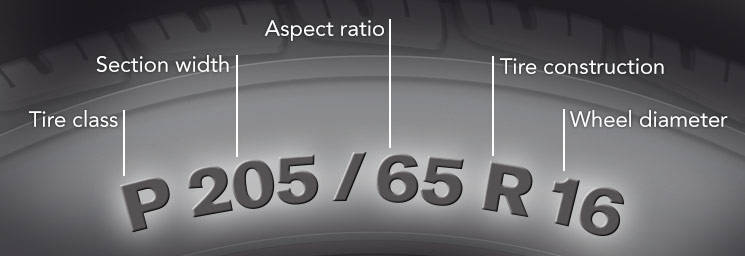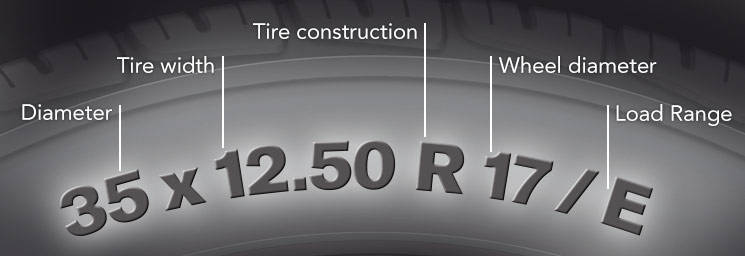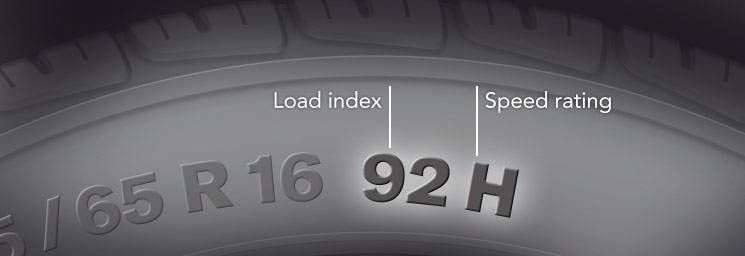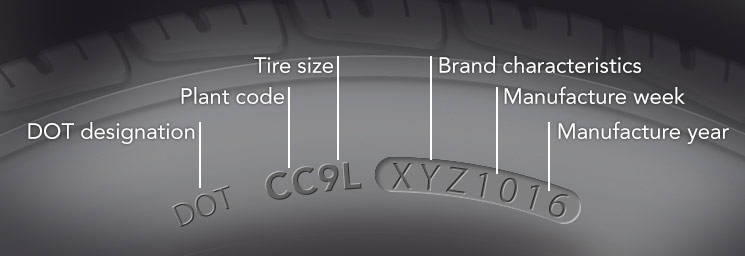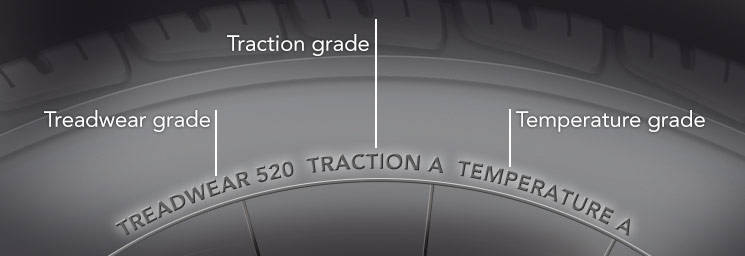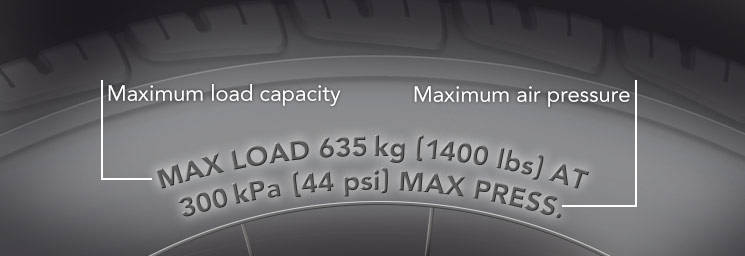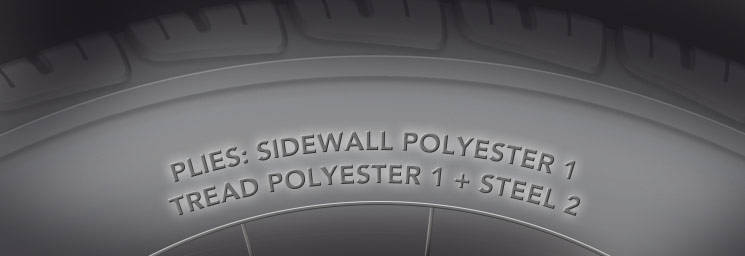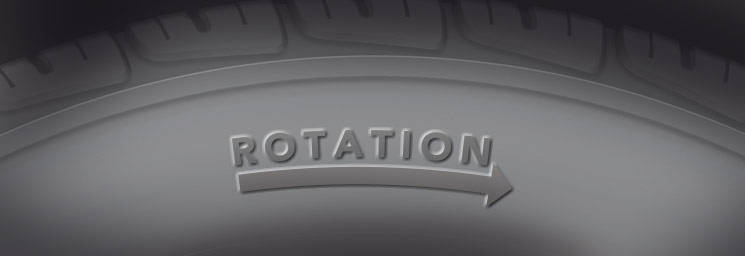So, what do the numbers in your tire's sidewall mean? Not only do they tell you your tire's size, but they can also help you determine a wealth of info about your tire. These alphanumeric markings can instantly tell you about the tire dimensions and tire construction, as well as other cool features, like your tire's load index and speed rating!
Once you know how to read your tire sidewall codes, you can find out everything there is to know about your tire with ease!
P-METRIC TIRE CODES
Your first question might understandably be, "How do I know if my tire is P-Metric?" It's pretty easy!
Your tire is P-Metric if the sidewall code begins with the letter "P". The P-Metric system uses metric and standard measurements and meets the US-based standardized organization requirements. The P-Metric system became standard after being introduced by American tire manufacturers in 1977.
Below is an illustration of a P-Metric sidewall code that shows what each character means:
The first character in a P-Metric code is a letter representing the tire class:
- "P" designates a P-Metric passenger constructed tire built to US standards.
- "LT" designates a light truck tire. LT tires are not part of the P-Metric family, but they are also built to US standards.
- The absence of a letter indicates a passenger-constructed tire built to European standards, sometimes referred to as Euro-Metric or Hard Metric tires.
After the tire class, you will see a number representing the section width. This measurement identifies the tire width from sidewall to sidewall in millimeters:
- The section width will be 3 digits.
- Our example tire has a section width of 205mm.
The aspect ratio follows the section width. It refers to the sidewall height as a percentage of the section width:
- Find the aspect ratio by looking for the two-digit number after the slash.
- Our example tire has an aspect ratio of 65, meaning that its sidewall height is 65% percent of its 205mm section width.
Following the aspect ratio, you'll find a letter that details the tire's construction type:
- "R" stands for radial construction, where the tire's plies run at 90 degrees to the centerline of the tread.
- "D" stands for diagonal bias construction, where the plies are situated at angles lower than 90 degrees.
The wheel diameter is the last figure in a P-Metric tire sidewall code. While the section width is given in metric, the tire's rim diameter is given in inches. This dimension indicates the diameter of the wheel on which the tire can safely be mounted.
Our example tire has a wheel diameter of 16, meaning that it will fit on a 16-inch wheel.
HIGH FLOTATION TIRE CODES
While they might look similar, the tire codes for high flotation tires are slightly distinct from the codes you'll find on P-Metric tires.
Let's look at an example high flotation code:
High flotation codes begin by listing the tire's total diameter, which is a measurement of the tire's height in inches:
- The diameter is a two-digit number.
- Our example tire has a diameter of 35 inches.
Up next, you'll find the tire's width, given in inches:
- The tire width will be a three or four-digit number with a decimal point.
- Our example tire has a width of 12.50 inches.
As with P-Metric tires, the next thing you'll find is a letter corresponding to the tire's construction:
- "R" stands for radial construction, where the tire's plies run at 90 degrees to the centerline of the tread.
- "D" stands for diagonal bias construction, where the plies are situated at angles lower than 90 degrees.
After the tire construction, the wheel diameter appears. It indicates the diameter that the tire can safely fit. Our example tire has a wheel diameter of 17, meaning that it will only fit on a 17-inch wheel.
While not all flotation tires are Light Truck tires, the ones that are will end by giving the load range, which provides a comparative idea of the tire's capacity to hold air and ability to carry weight. The load range will be given in letter form, typically either C, D or E. there.
OTHER SIDEWALL MARKINGS
In addition to the tire dimensions, your tire codes contain other details that provide even more information about the tire’s characteristics. This includes extra information about the tire’s age, construction, performance attributes, and more.
Let’s look at some of these other markings to figure out what they mean.
LOAD INDEX AND SPEED RATINGS
After the size code, you will find characters representing the tire's load index and speed rating.
The load index, given in number form, indicates how much weight your tire can carry at different inflation pressures. Once you've found your tire's load index, check out our handy load index chart to ascertain your tire's precise load-carrying capacity.
Our example tire has a load range of 92, which corresponds to 1389 lbs at 36 psi.
The speed rating is a letter indicating the maximum speed that a tire can safely reach and maintain. Bear in mind, these numbers are determined in a highly controlled lab setting. your tire may be rated for up to 149pmh, but we highly recommend that you follow the stated speed limit wherever you're driving.
Here, the example tire has an "H" speed rating, which means it can safely travel at speeds up to 130 mph.
US DOT AND SAFETY STANDARD MARKINGS
Some of the other details on your tire sidewall are critical because they're legally required!
The Department of Transportation and safety markings provide information about how, where and when your tires were made, as well as their compatibility with federal regulations. Similar to the tire size code, this takes the form of an alphanumeric code, and it provides a surprising amount of detail about your tires. The DOT and safety markings look like this:
The DOT designation indicates that the tire meets or exceeds the U.S. Department of Transportation's safety requirements for on-road use. Tires without this designation aren't legal for street use.
The plant code appears as the two letters after "DOT." These characters identify the tire's manufacturer and site of creation.
After the plant code, you'll find two characters that express the tire size in a code determined by the manufacturer.
The first three characters after the dash represent brand characteristics in a code also determined by the manufacturer. The plant code, tire size and brand characteristics are intended for the manufacturer's internal use.
After the brand characteristics, there are four numbers representing the tire's date of creation. The first two numbers in this sequence tell you what week the tire was made. In our example, we see the number 10, which indicates that this tire was produced in the 10th week of the year.
The last two digits tell us the year the tire was manufactured. When you combine the week and the year, you have a very precise idea of when your tires were made. In our example above, we see a 16, which means the tire was manufactured in 2016. As we know from earlier, this tire was produced in the 10th week of that year, meaning it was made during the 10th week of 2016.
TREADWEAR, TRACTION, AND TEMPERATURE MARKINGS
In addition to safety and manufacturer information, the DOT stipulates that all tires display their performance grades under the Uniform Tire Quality Grade (UTQG) system. While these grades are useful, they should only be used when comparing tires from a single brand. The UTQG markings are spelled out, like this:
The treadwear grade appears first. It offers a relative score describing a tire's ability to resist wear:
- This grade measures a tire's wear resistance compared to a control tire with a 100 rating.
- In the example above, the tire's 520 treadwear rating estimates that this tire should wear a little more than five times as long as the control tire.
The traction grade appears next. This ranking describes the tire's ability to stop on straight, wet surfaces under controlled conditions:
- Traction grades are given on a comparative scale: AA, A, B and C, with AA being the highest and C being the lowest.
- Our example tire has an A traction grade, meaning that it has very good but not superior stopping power on wet surfaces.
The temperature grade is the last UTQG marking. It measures the tire's ability to dissipate heat and resist temperature buildup:
- Temperature grades are also given on a comparative scale: A, B, and C.
- Our example tire has the highest temperature grade, an A.
MAXIMUM LOAD CAPACITY AND INFLATION PRESSURE
Along with its size codes and performance grades, your tire sidewall also displays the tire's maximum load limit and inflation pressure. You'll see these specs explicitly called out:
The maximum load capacity, like the load index, identifies your tire's load-carrying capacity when inflated to its maximum air pressure.
Just like it sounds, the maximum air pressure is the tire's maximum inflation pressure, and it shouldn't be exceeded:
- Standard and extra load tires meet the tire's max load capacity at 36 and 42 PSI, respectively, and maintain that load up to the tire's max operating pressure.
- The example tire has a maximum pressure of 44 psi, with a carrying capacity of 1400 lbs.
Remember that these max load and air pressure limits apply to the tire and not your vehicle. Always check your owner’s manual for your vehicle’s cold inflation pressure recommendations.
PLY CONSTRUCTION
Additionally, your tire sidewall will display information about its construction. You will find this information written out in a clear format:
This information tells you which materials are used in the tire’s plies, and the quantity of each type of ply.
Learn more about Tire Construction.
ROTATION DIRECTION
Finally, some tires are designed to be installed in a specific way. In these cases, look to the sidewall for instructions regarding the tire’s correct position. There, you will find directions for the tire’s correct mounting and installation:
Directional Tires have a specified direction of rotation. These tires feature arrows on the sidewall indicating the direction they should rotate.
Asymmetrical Tires have different patterns on the outside and inside halves of the tread. They will have the word “outside” labeled on the side of the tire that should face outward.
Some tires are both directional and asymmetrical. These tires will indicate both the proper direction of rotation and the outward side. Learn more about tire tread patterns!
Do you need fresh rims to go with your new set of tires? We’ve got you covered with the largest inventory of aftermarket rims, all at our unbeatable, low prices.
If you have any questions or require any assistance, stop by any of our America's Tire locations and we'll get you taken care of! Customers who buy and book online save time in-store!

